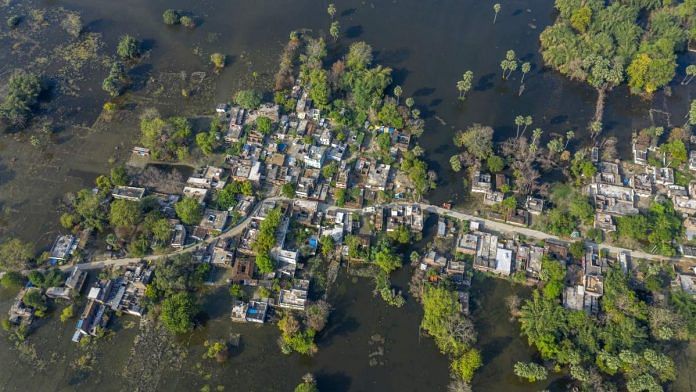New Delhi: India should commit to net-zero emissions, but not necessarily by 2050, one of India’s leading climate change experts, Arunabha Ghosh, has said.
India has resisted committing to the target, which seeks to achieve a situation where a country is removing as much of the greenhouse gases it is emitting into the environment. New Delhi holds that such a target is unjust for developing nations like India and the responsibility for making deep cuts lies with developed nations, who have contributed the most to global historical emissions.
“I believe India should commit to net-zero. But I don’t believe we should follow the same timeline of 2050. What’s important is that the goal is set, so that it can be matched by sector targets in the short- and medium-term,” said Ghosh who is the CEO of the Council on Energy, Environment and Water (CEEW). He has also been an advisor to the Indian government as well as in the COP21 negotiations, also known as the Paris Agreement.
The European Union’s emissions peaked in 1979, at 3.99 billion metric tons (MT), making the transmission time between the peak and net-zero emissions over 70 years. For the US, which peaked in 2007, the transmission time is 43 years. India’s peak, meanwhile, is yet to arrive. In 2020, emissions averaged 160 MT CO2.
“India needn’t commit to net-zero by 2050, but the transition time between its peak and net-zero shouldn’t be as long as 70 years either. That time can be shortened after we peak,” he said in an interview with ThePrint.
According to the Paris Agreement, India pledged to reduce emissions by 32-35 per cent below 2005 levels, produce 40 per cent of its electricity through renewable sources, and create a carbon sink of 2.5–3 billion tonnes through additional forest and tree cover by 2030. A carbon sink absorbs more carbon dioxide than it releases, thus removing it from the air.
In 2019, India enhanced its renewable energy goals to install 450 GW of renewable energy capacity by 2030, which Ghosh says will reduce emissions further.
“With 450GW of renewable energy by 2030, India’s emissions intensity of GDP will reduce by around 54 per cent against 2005 levels. We have already reduced emissions intensity by 24 below 2005 levels. We had committed to reducing emissions intensity 33-35 per cent by 2030, so we are on track to achieve those goals.”
John Kerry, the US special presidential envoy for climate, who was in New Delhi earlier this week, had said India’s goal of installing 450 GW of renewable energy is among the most “powerful” in the world. Speaking at the launch of the Climate Action and Finance Mobilization Dialogue (CAFMD) — to help India scale and fund renewable energy projects to meet its Paris Agreement goals — he expressed confidence that India will “announce one thing or another going into COP”.
Also read: Indian Railways net-zero emissions aim could help meet 5% of Paris Agreement goals, report says
How India can increase climate resilience
According to the latest report by the Intergovernmental Panel on Climate Change (IPCC), India can expect to see more intense and frequent heat waves, as well as increased precipitation in the decades to come.
As more extreme weather events take place, a major consequence will be the loss of lives and infrastructure as India becomes more developed. India’s infrastructure needs to become more climate change resilient, and its economy more carbon-friendly, in order to withstand this worsening global crisis, Ghosh said.
“The climate is already changing and it will only get worse. As India develops, damages will also increase,” he said, adding, “Meteorological patterns are changing and impacting our infrastructure. These losses will endure because of climate risks. These have to be insured and accounted for, starting now.”
India in August announced the launch of the National Hydrogen Mission, a scheme aimed at making India more energy “self-reliant” and sustainable. Under the mission, fuel from hydrogen will be produced through electrolysis, which, if from a renewable source, will be emission free. A global green hydrogen alliance, which would pool resources for tech development and propose common standards for safe storage and transport, could help make it more financially viable, Ghosh said.
“The hydrogen push is absolutely crucial. We can’t do heavy industry on solar power — we need batteries for cars, but we need fuel cells for trucks. Right now green hydrogen is expensive. We have to reduce the cost of the electrolysers and the embedded membrane. But these are investments we can make today,” Ghosh said.
(Edited by Manasa Mohan)
Also read: How much land would be needed to power a net-zero India? New study shows



